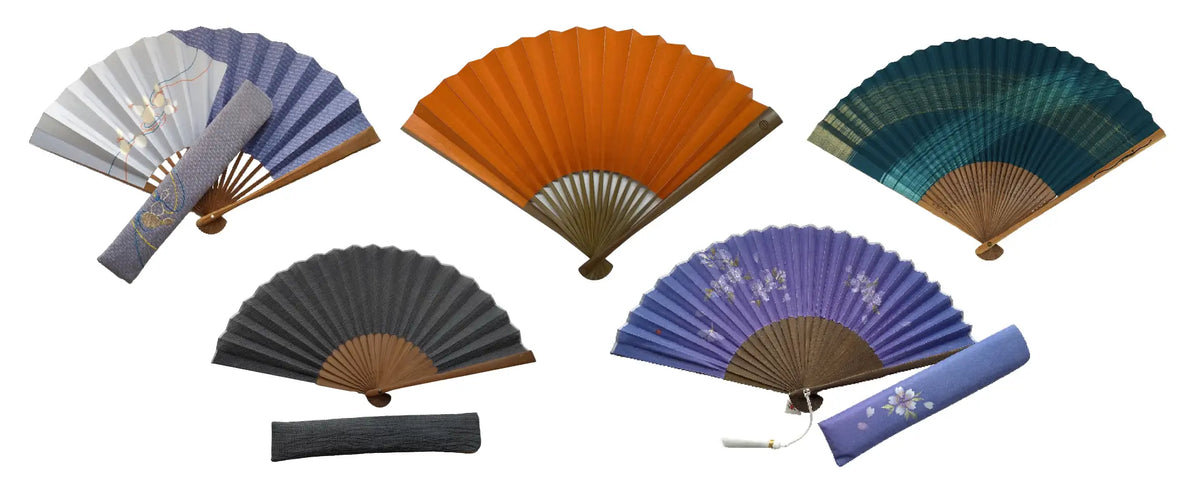Basic knowledge of congratulatory fans|Main types, correct usage, and 6 popular congratulatory fans
Fans have long been considered lucky charms in Japan and have been used on festive occasions. At weddings and other celebratory occasions, fans called "shugi-sen" (congratulatory fans) are used as accessories. If you are wearing a formal kimono, please prepare a congratulatory fan as well. This article describes the characteristics of the shugi fan, its differences from ordinary fans, and the etiquette for using it on festive occasions. In addition, we also introduce the congratulatory fans recommended by Ibasen, a long-established company that handles a wide variety of fans, so we hope you will find them useful in your preparations for the celebration.
Celebration Fan Fundamentals!
What is "Shugi-fan (congratulatory fan)" and on what occasions is it used?folding fanWhat is it? First, we will explain the characteristics and types of congratulatory fans. Used for celebratory occasionsfolding fanIf you are looking for a
What is a congratulatory fan?
Shugi-fan is a rather small-sized ceremonial fan used for celebratory occasions.folding fanIt is used at festive occasions. It can be read as "Shugi Sen" or "Shugi Ougi". Shugi-fan is also called "Shugifolding fan(It is also sometimes called "shuukyu-sensu" or "suehiro".
Shugi-fan and generalfolding fan(= summer)folding fan) have a big difference in usage. Summerfolding fanthe main use of a fan is to spread its surface and fan it when cooling off. On the other hand, a ceremonial fan is inserted into the obi or held in the hand at ceremonial occasions,folding fanbut not to be held in the hand. Basically,folding fanis kept closed. Please read on for more detailed information on how to use the congratulatory fan, as described below.
Shugi-fan is used at festive occasions because of its shape of spreading out, which is considered auspicious. The shape of the fan spreads out gradually.folding fanhas long been used as a good-luck talisman, with meanings such as "prosperity. Even today, it is used at weddings and other festive occasions.
Types of Congratulatory Fans
Congratulatory fans are mainly divided into two types: for women and for men. Each has a different design, so choose the one that best suits your purpose.
- For Women
Most women's congratulatory fans are designed with gold or silver base paper and black lacquered bones. They are mainly used with formal kimono worn at weddings and other ceremonies. Specific examples include black tomesode, which is the first formal wear for married women, as well as colored tomesode and visiting kimono, which are abbreviated formal wear. There are also congratulatory fans made of white or maki-e lacquered bones for women. These fans are often designed to be worn with kimonos other than Kuro-tomesode.
- For Men
Men's congratulatory fans are generally of a simple design with a white ground paper on a bamboo bone. This is called a "white fan (hakusen). In Japanese dress, the white fan is matched with the first formal attire, the black hanabutae five-piece crested coat of arms (kuro montsuki). It is also possible to select a white fan (morning fan) for Western-style clothing and match it with a morning coat, which is the formal formal attire. Shugi fans for men can be used with both Japanese and Western-style clothing.
6 popular celebration fans
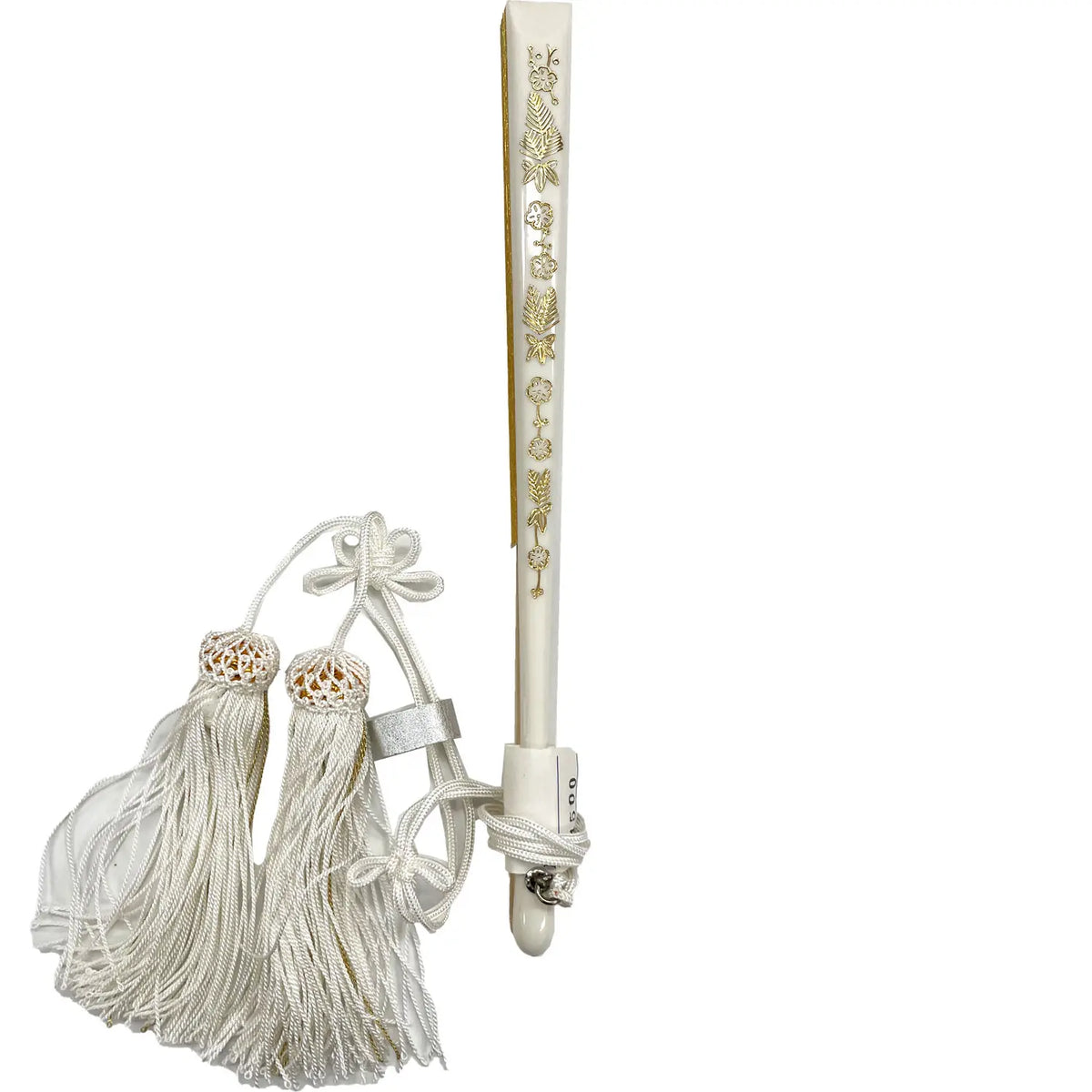
Bride's fan
with tassel
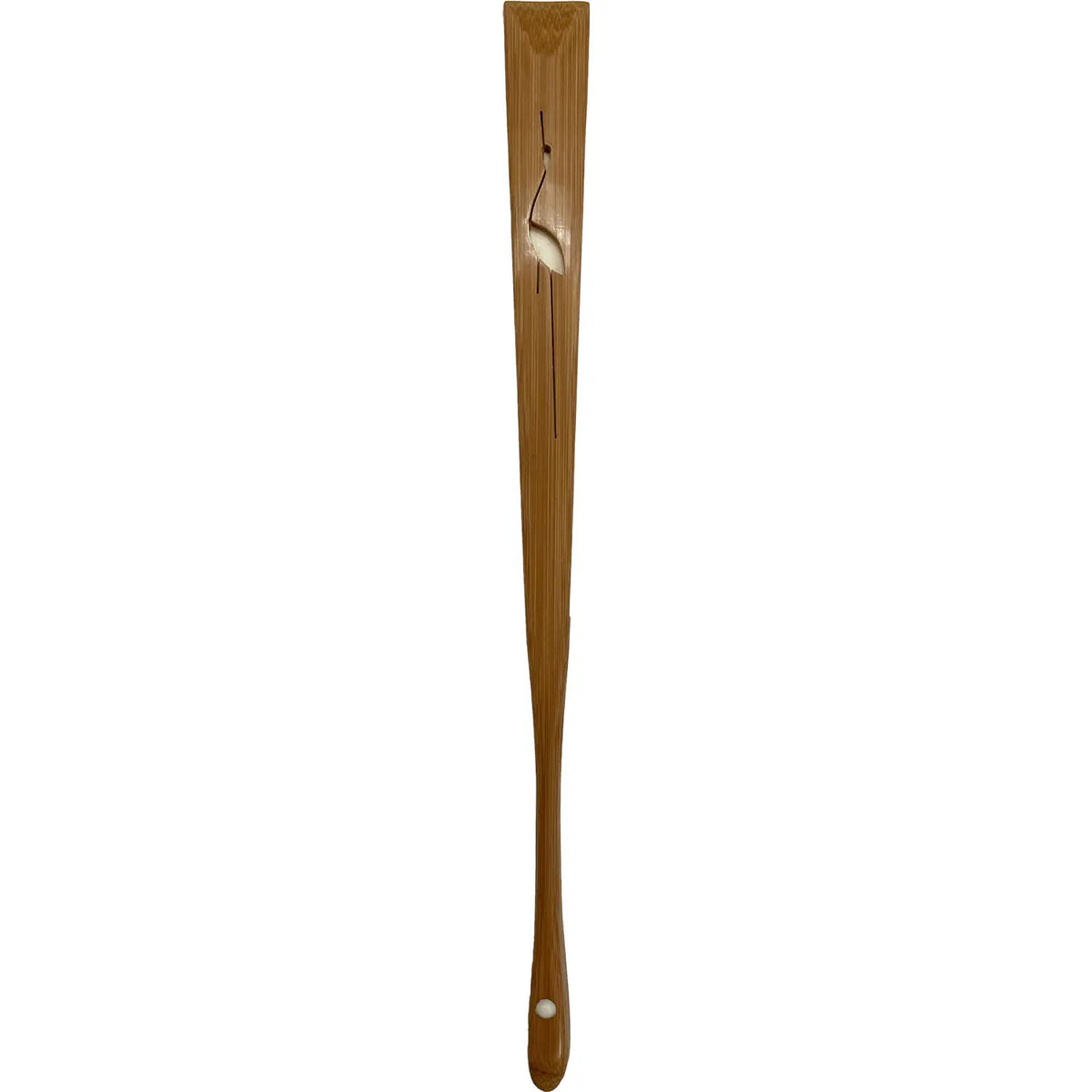
Morning Fan
for men
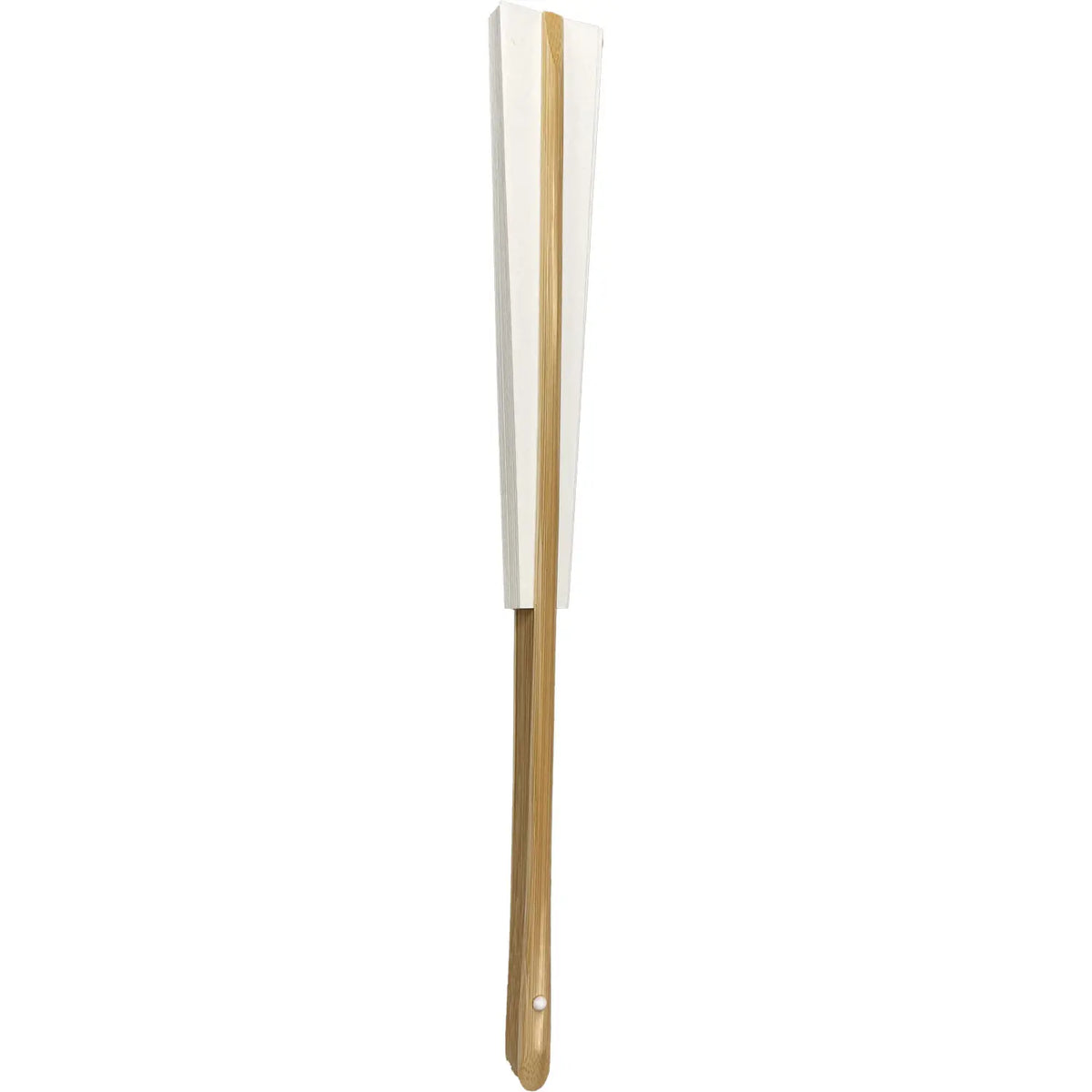
White fan, 9
for use by men
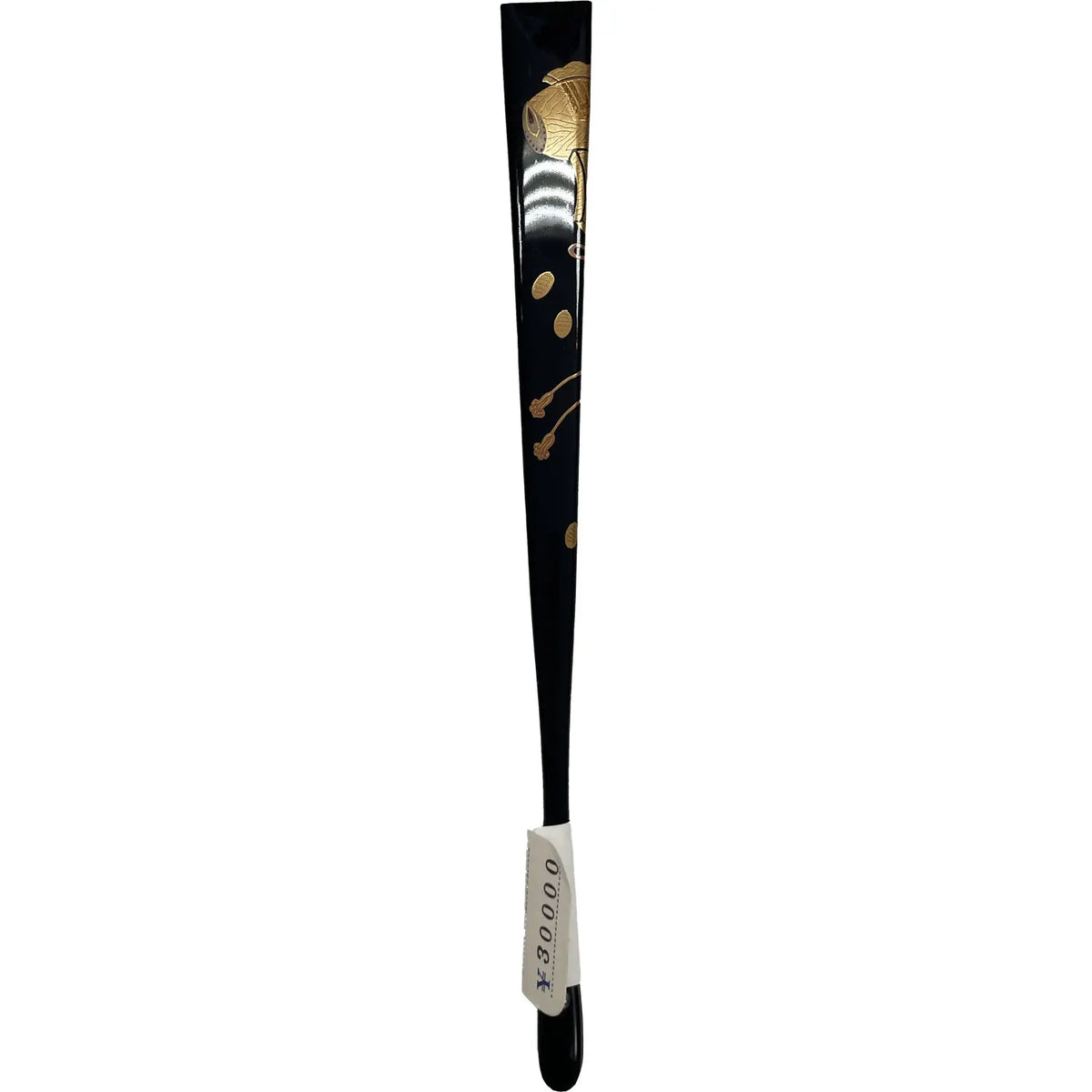
Maki-e Hammer
For Tomesode
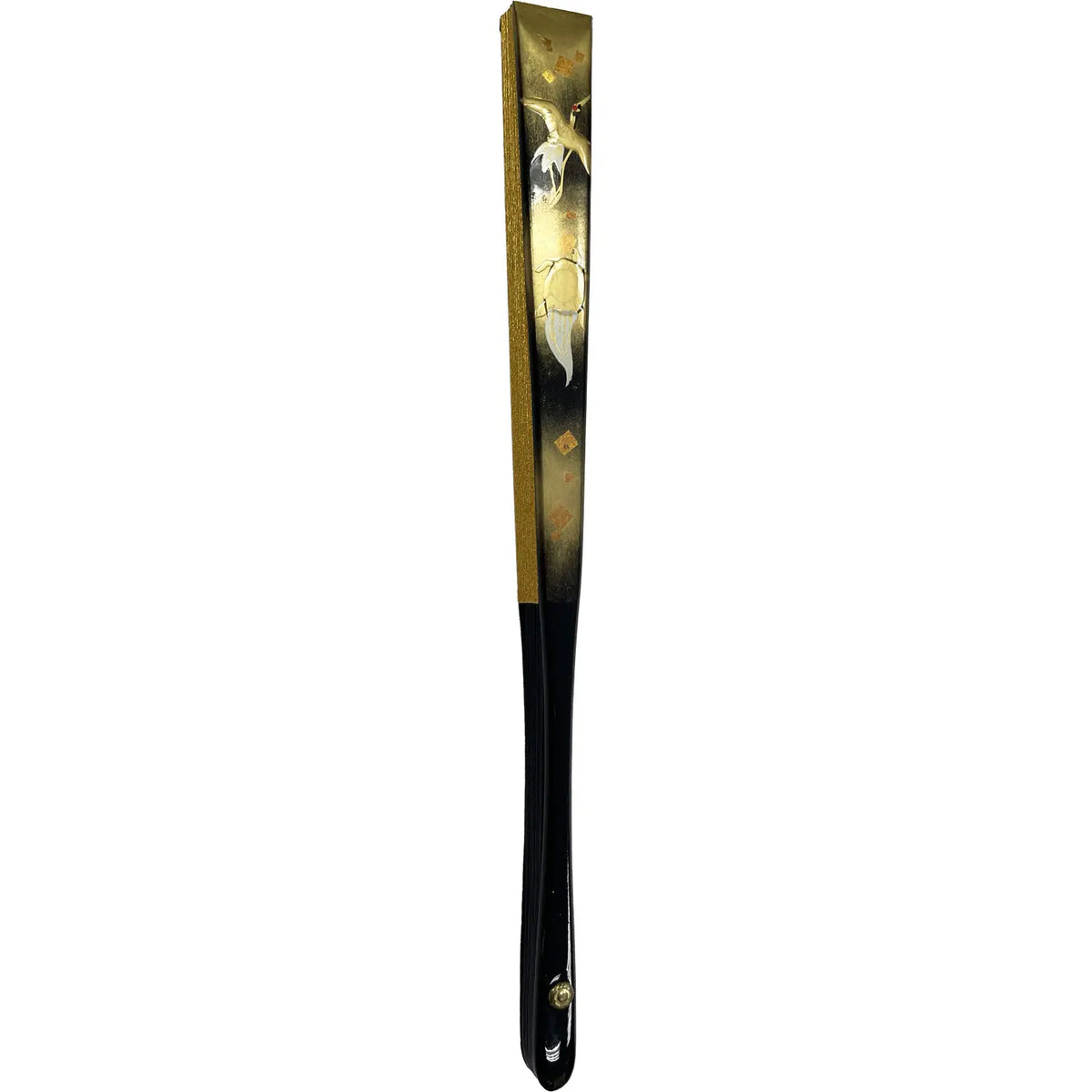
Maki-e: Crane and Turtle
For Tomesode
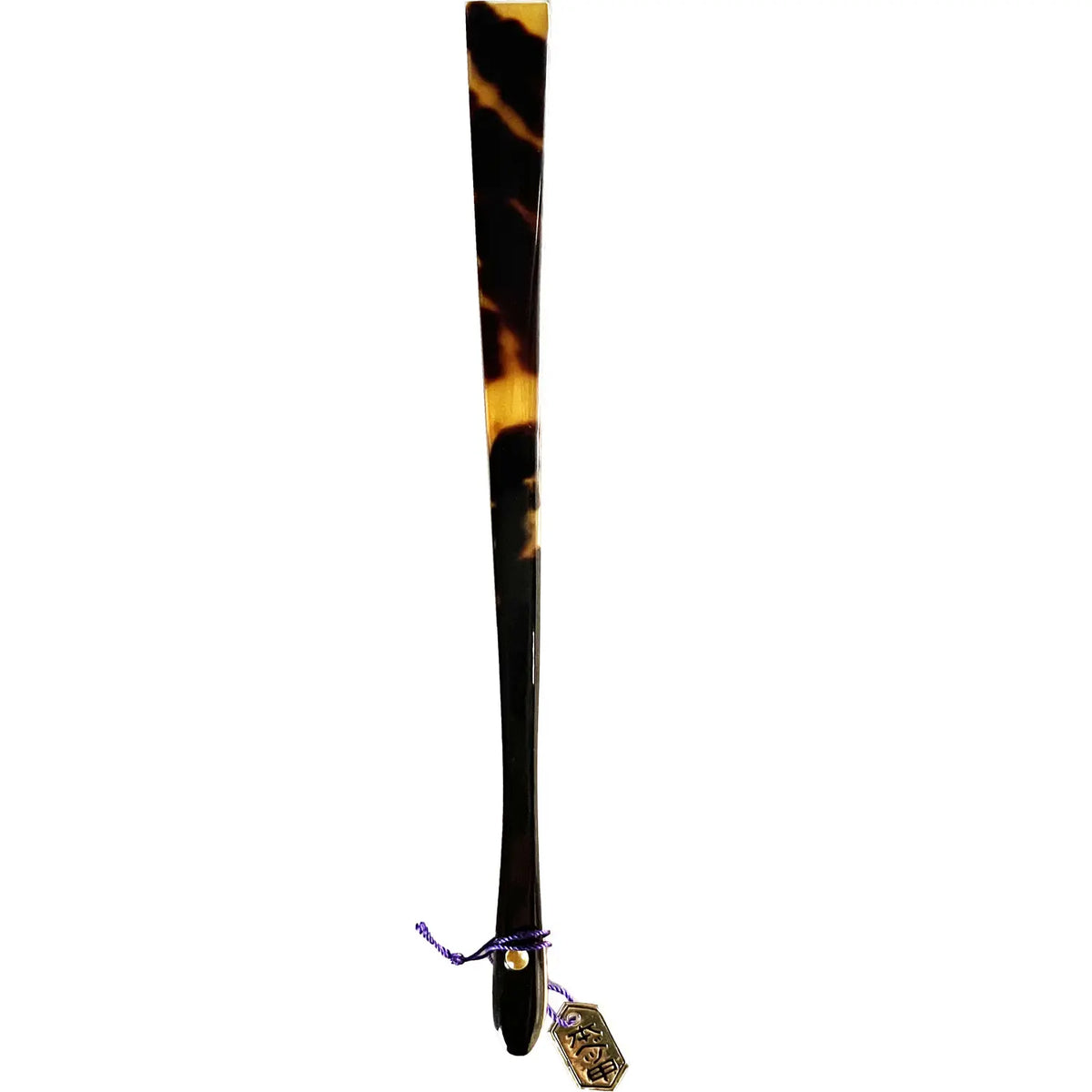
Tortoiseshell pure gold
For Tomesode
How to use a congratulatory fan properly
If you are wearing a formal kimono for a wedding or other celebratory event, please prepare a congratulatory fan as well. Here we introduce the proper use of a congratulatory fan. Please keep the following points in mind when using a congratulatory fan at a celebration.
Basic Usage
In the case of a woman's kimono, the fan should be inserted on the left breast side of the obi, with the main point of the fan down and slightly tilted. The key to this is to insert the fan between the obi and obiage, with the tip of the fan about 2-3 cm from the obi. Also, the paper side should face the front. Basically, leave it in this state and take it out for use as needed.
In men's kimonos, the fan (white fan) is held in the right hand. If you want to open your hand, the place to insert the fan is inside the hakama, between the square belt and the kimono. The fan should be placed on the left side of the chest, with the main point of the fan down and tilted slightly so that the base of the fan can be seen.
It is considered bad manners to use a congratulatory fan to cool off. Summerfolding fanPlease be careful not to use a fan spread out as in the case of the summer.
How to use a fan during a standing ceremony
At weddings and other festive occasions, there are occasions when people greet each other with a standing bow. A congratulatory fan is held in the hand and used during such greetings. Even when used in greeting, the congratulatory fan is used in the closed position, so please be careful not to open it. The key to holding the congratulatory fan in greeting is to hold it with the right hand so that the outer rib is at the top, and the left hand should be attached from below. The height to hold the congratulatory fan is,folding fanThe standard height for holding a congratulatory fan is around the point where the "uchi" is in front of the navel.
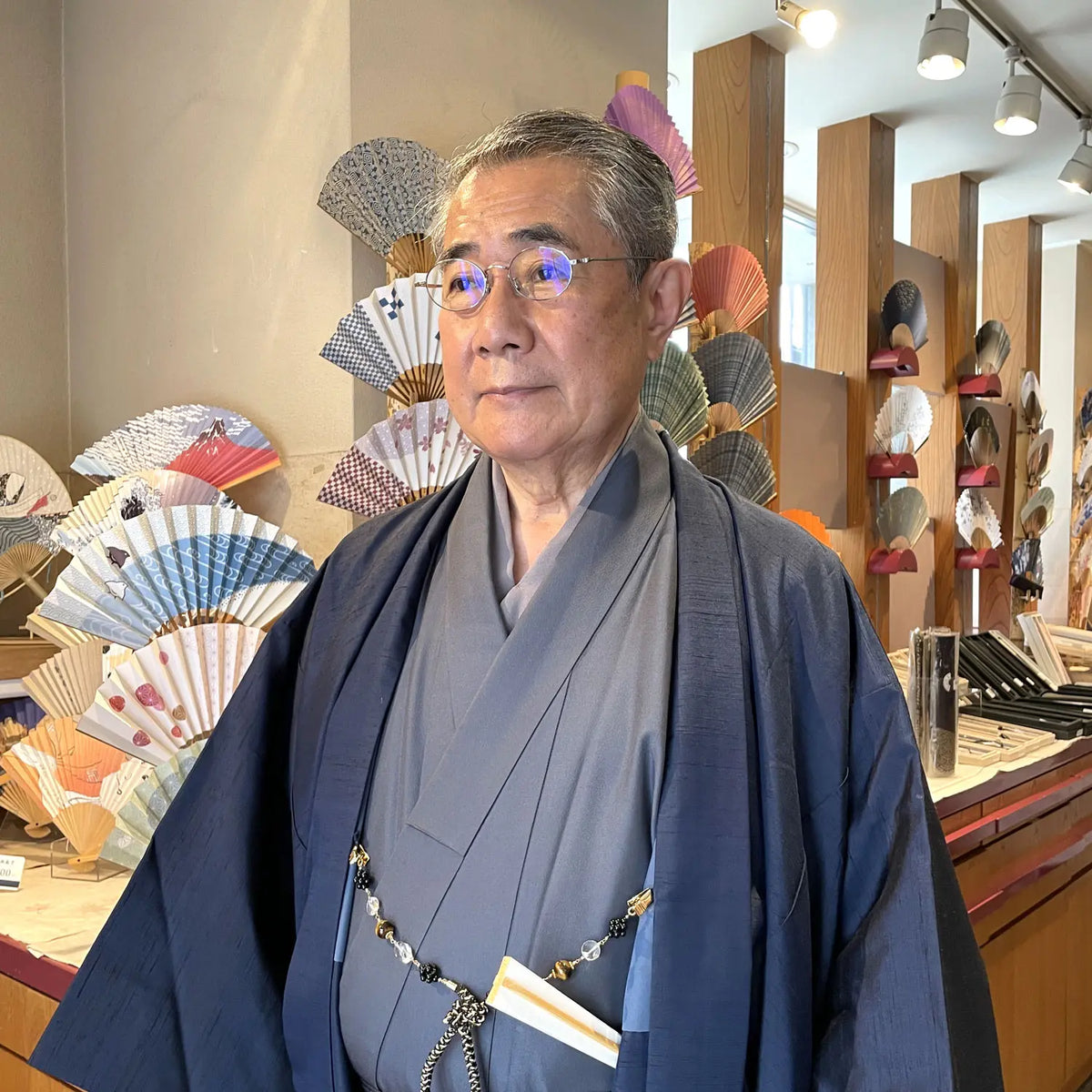
Basic usage of the congratulatory fan
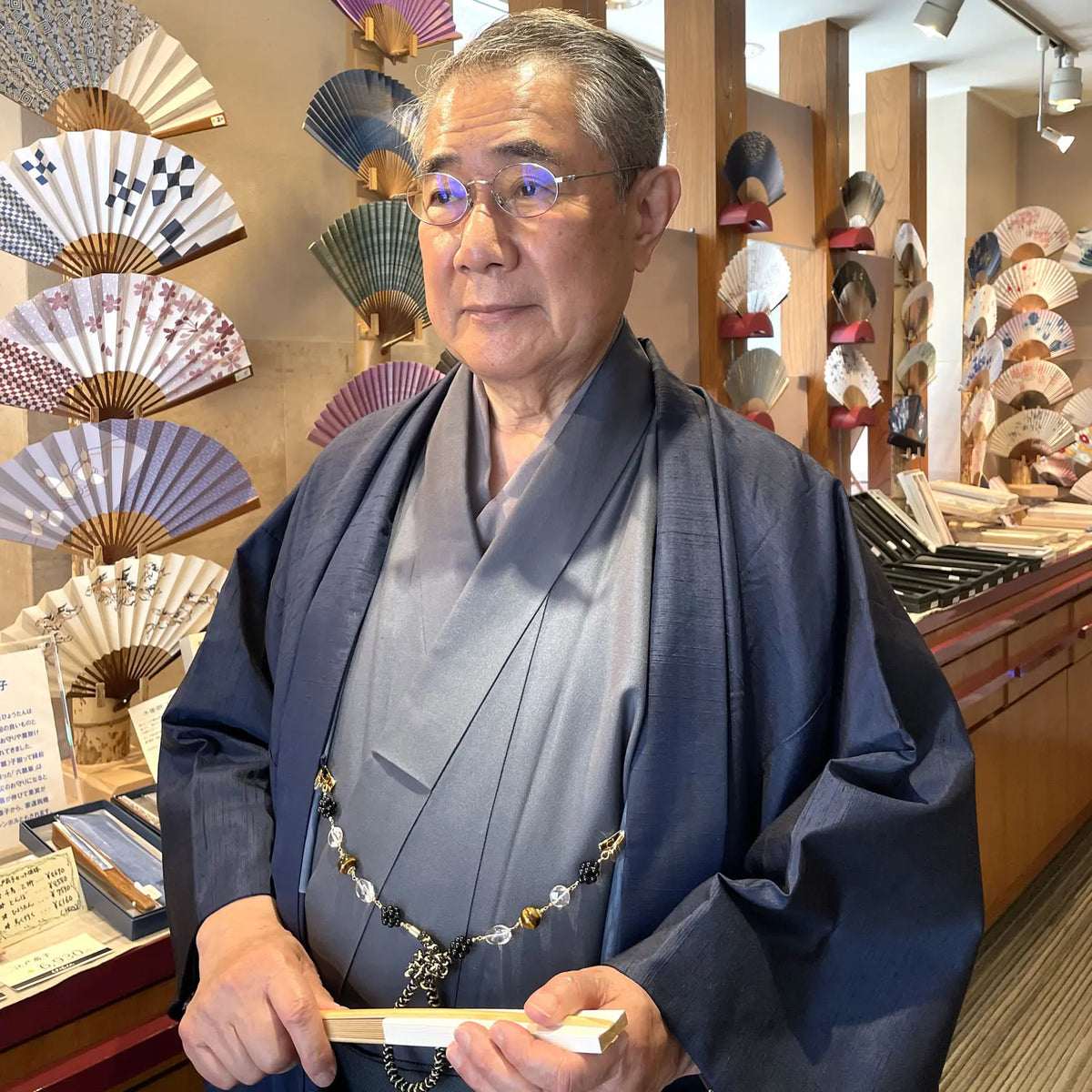
How to use a congratulatory fan during a standing bow
How to Use a Seated Ceremony Fan
When performing the zarei (seated bow), place the fan in front of your knees in an upright position with the fan closed and bow. In this way, in the zareifolding fanis used in the tea ceremony to greet people at tea ceremonies.folding fanis a typical example. On the other hand, in many recent weddings, chairs are provided at the venue, so there are few occasions to use a shugi fan in a zarei ceremony.
Usage during Zarei Example of Tea Ceremony Fan
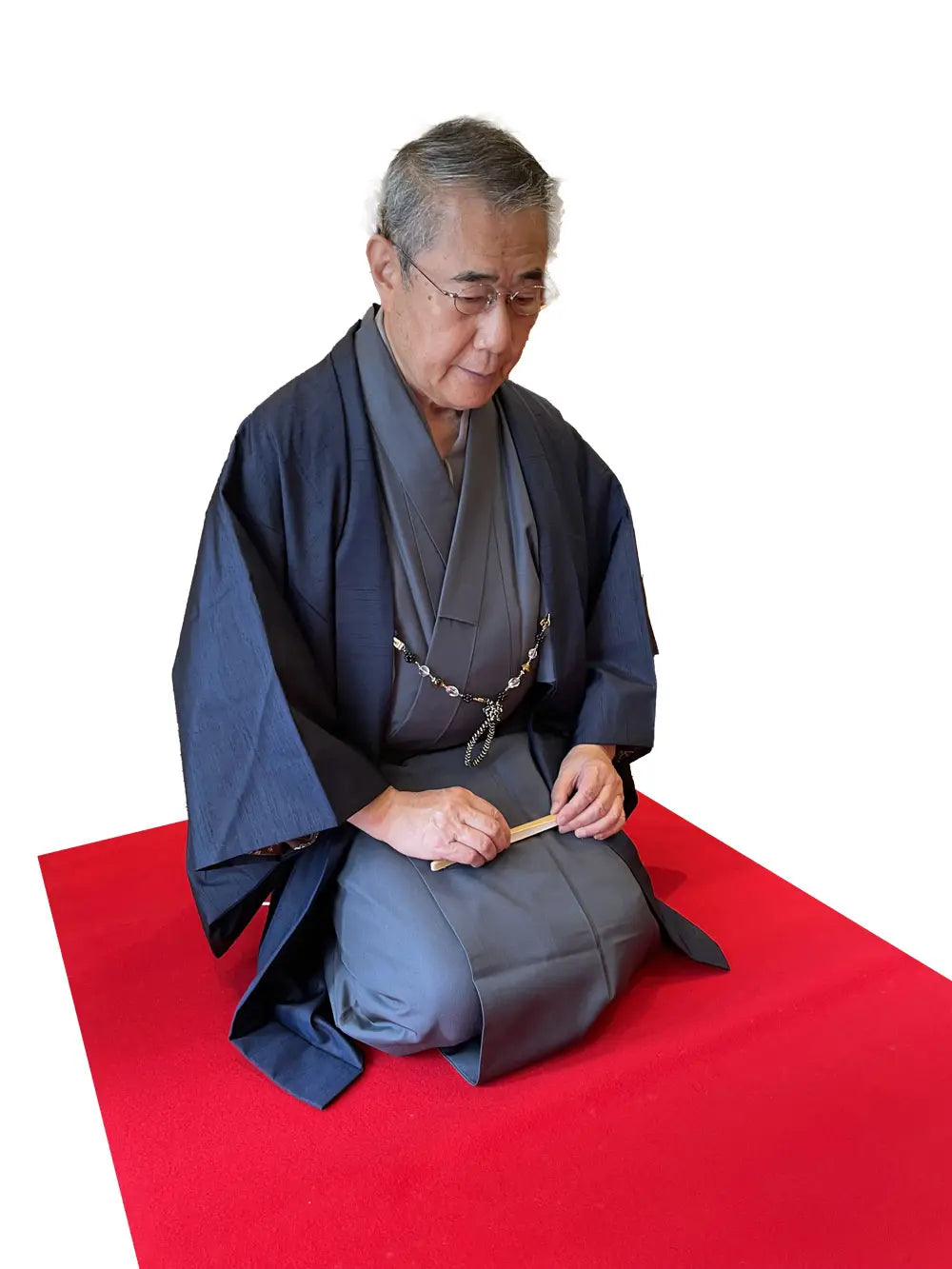
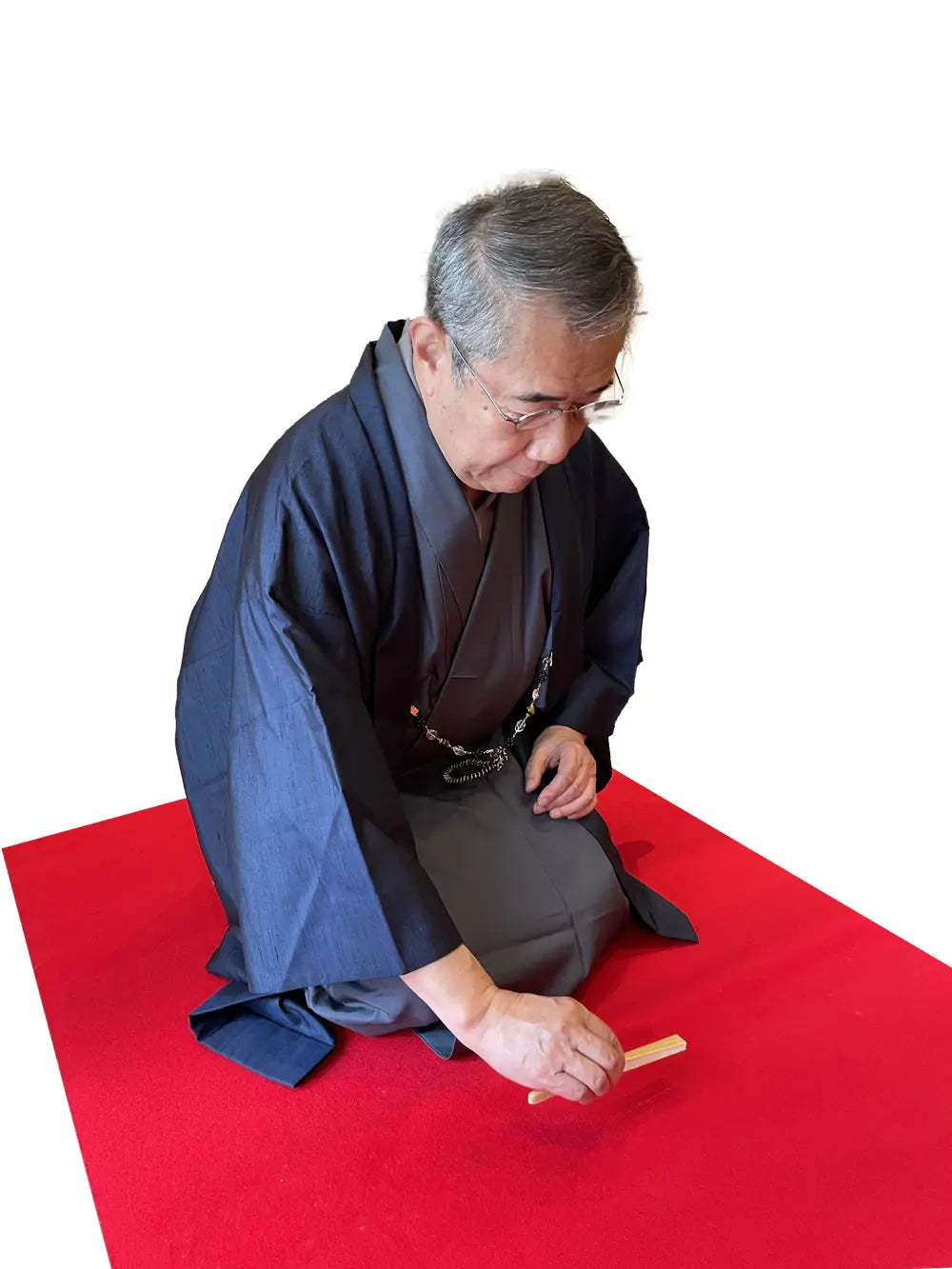
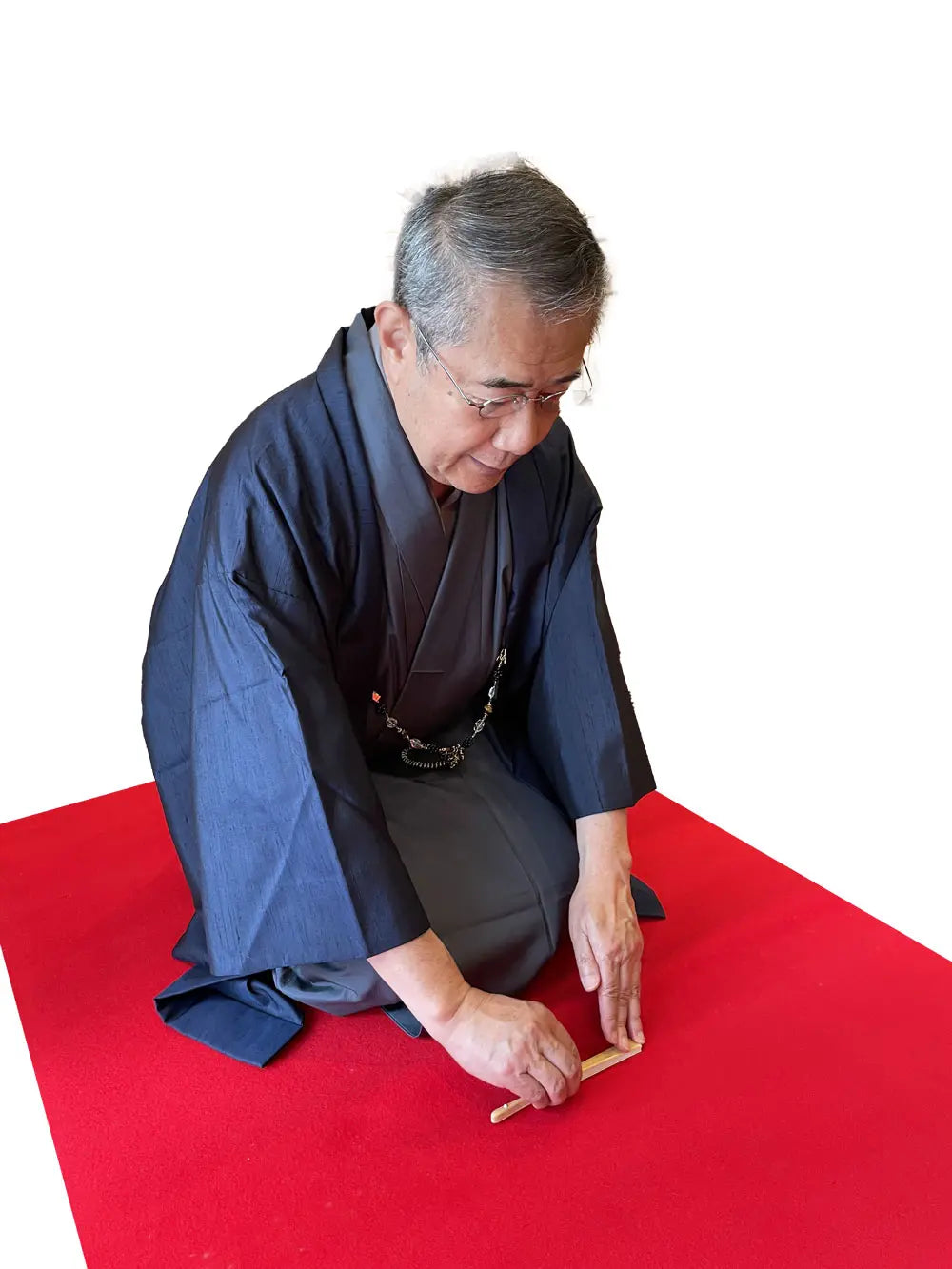
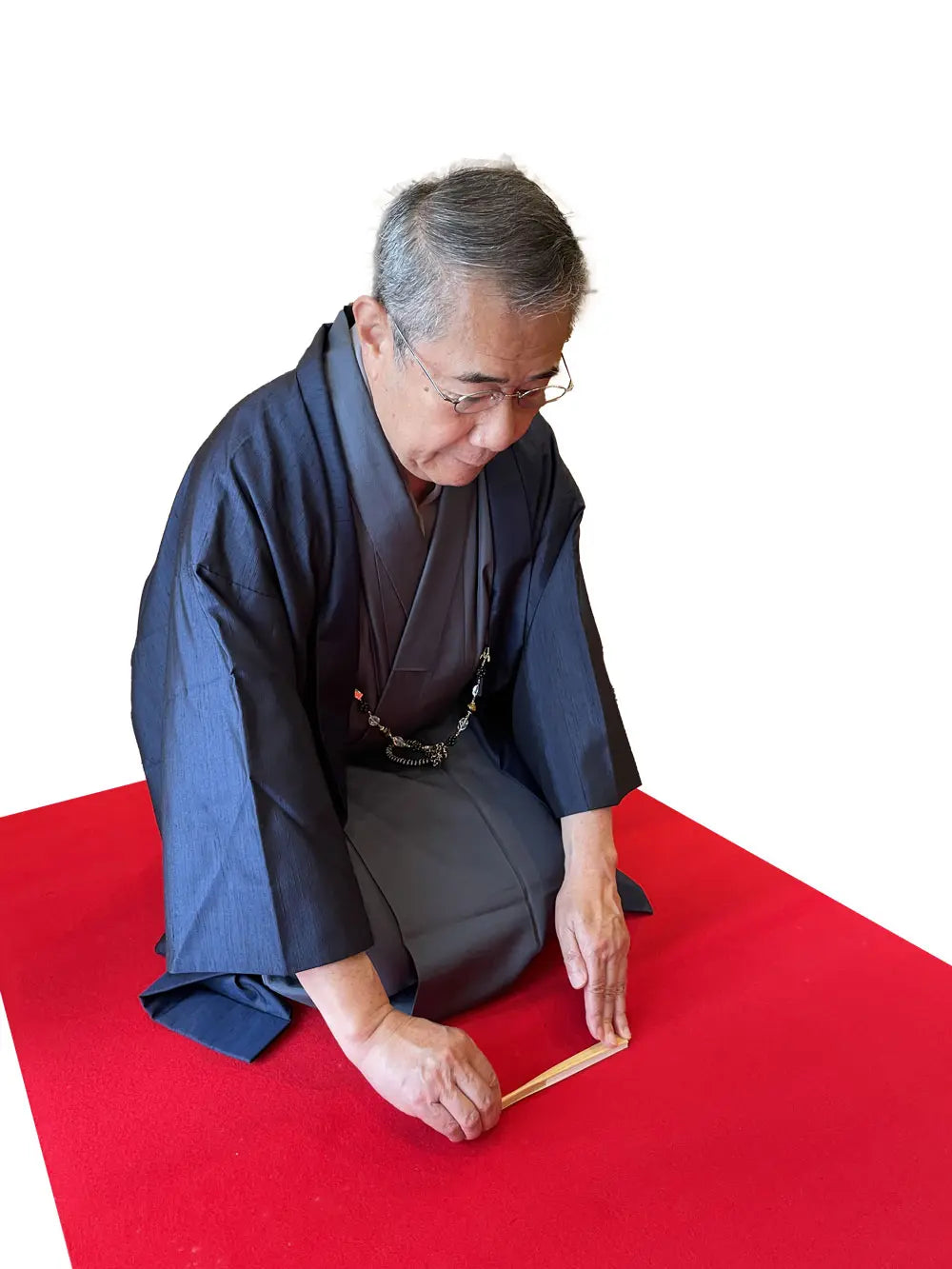
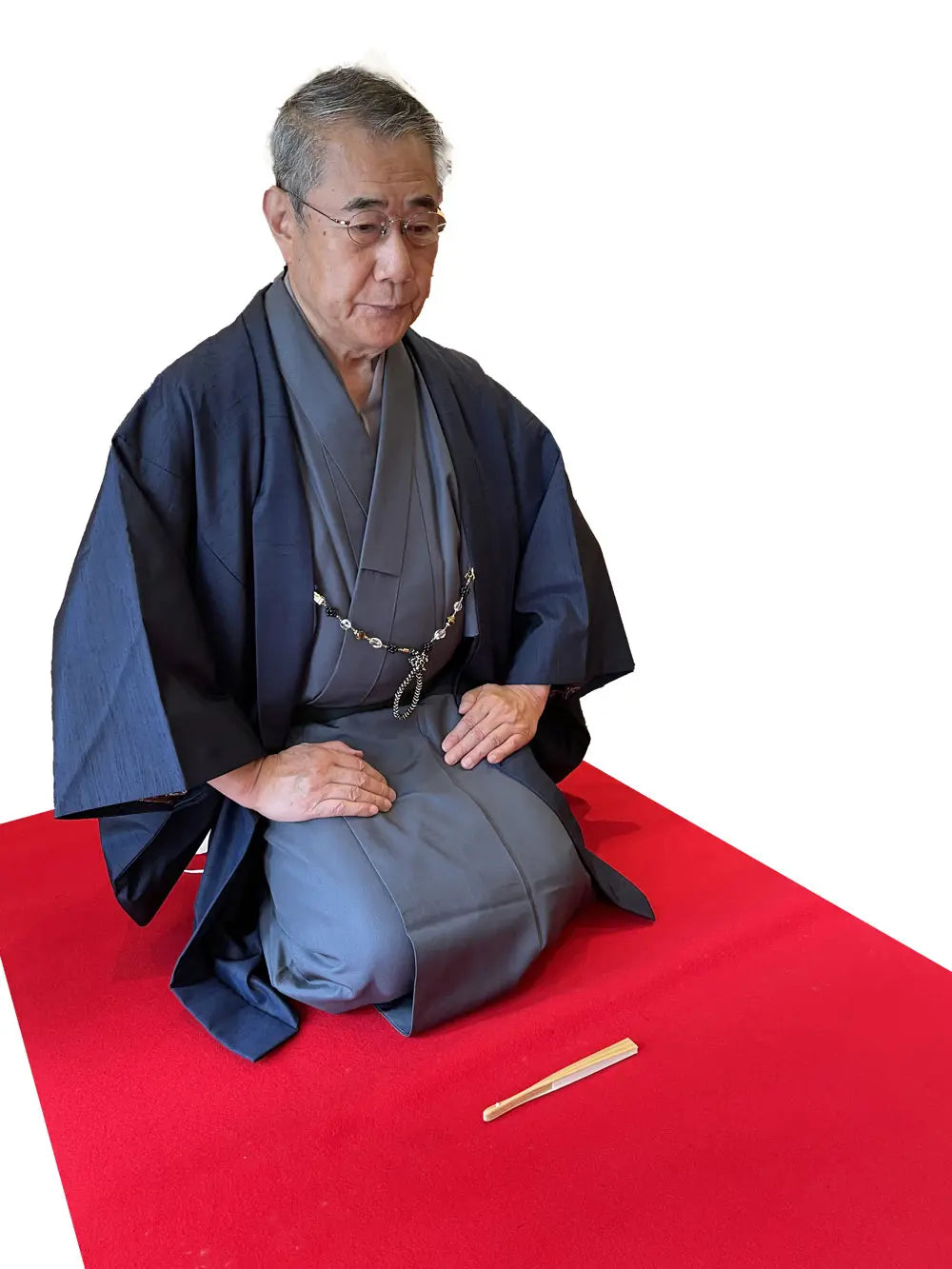
Special Usage
Shugi fans are generally used without being unfolded, but as an exception, they may be unfolded when used as a stand on which to place an object. In such cases, the congratulatory gift or other item is placed on the opened fan.
When a tea fan is used as a stand Gyogi, etc.
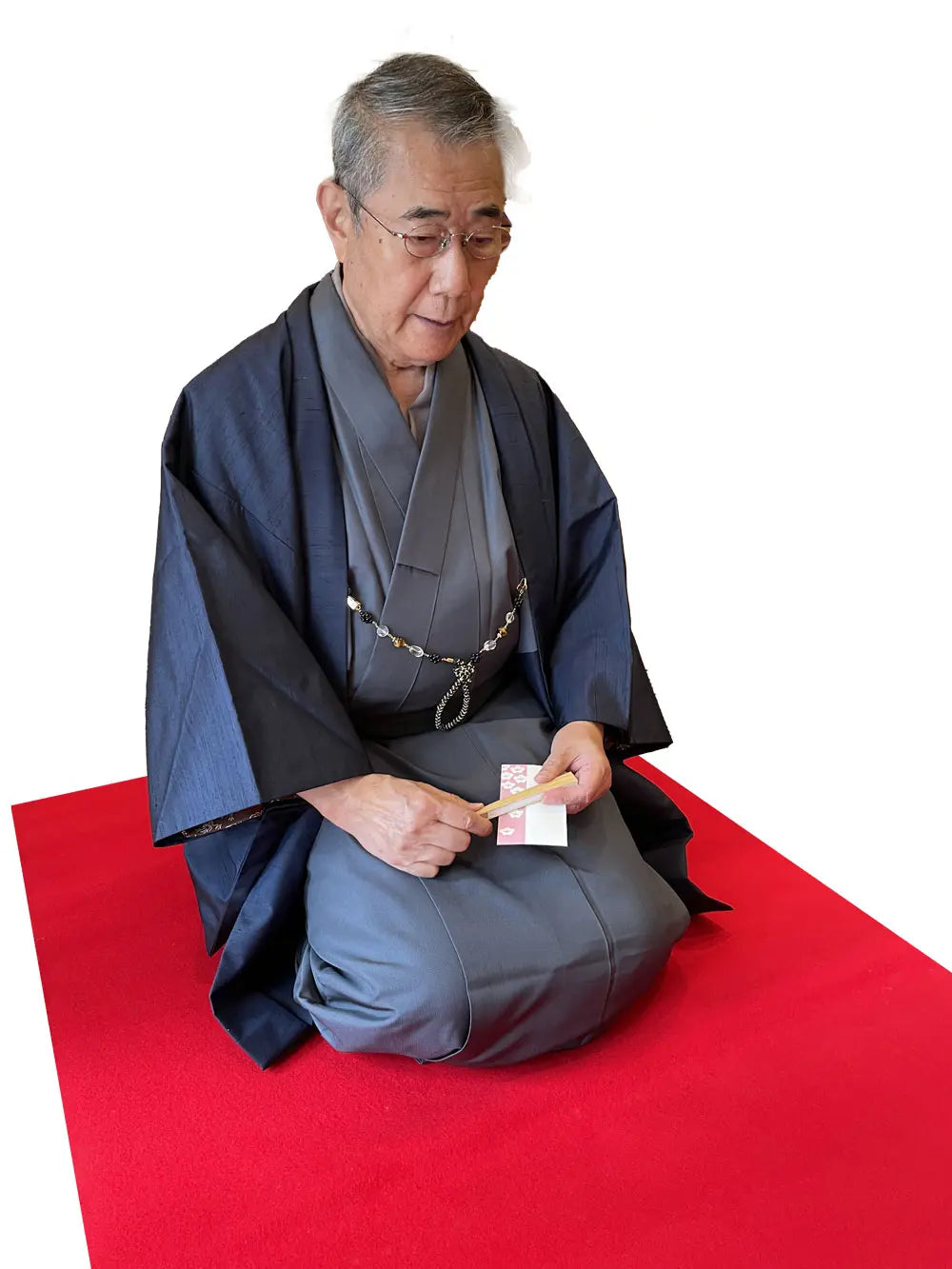
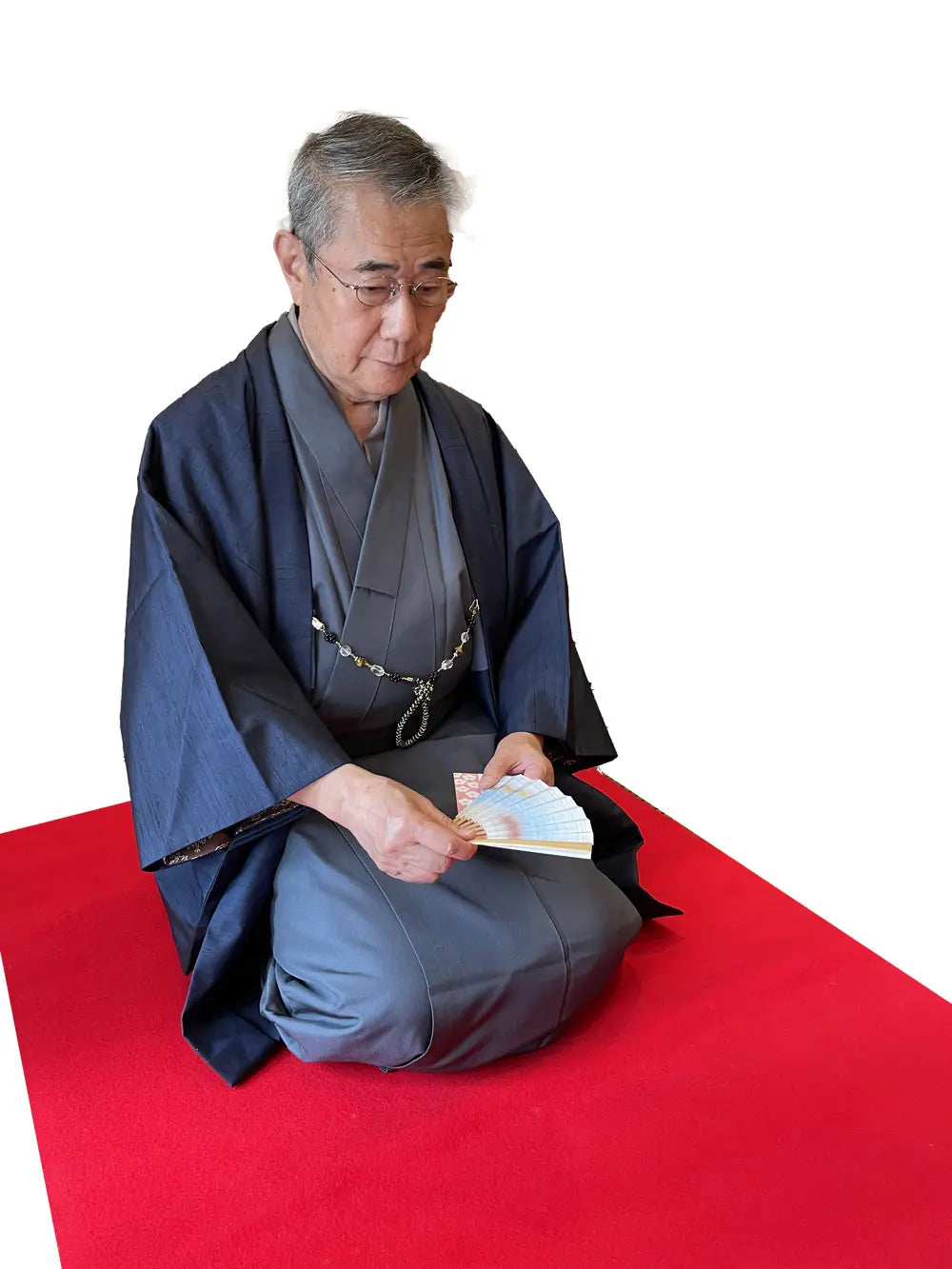
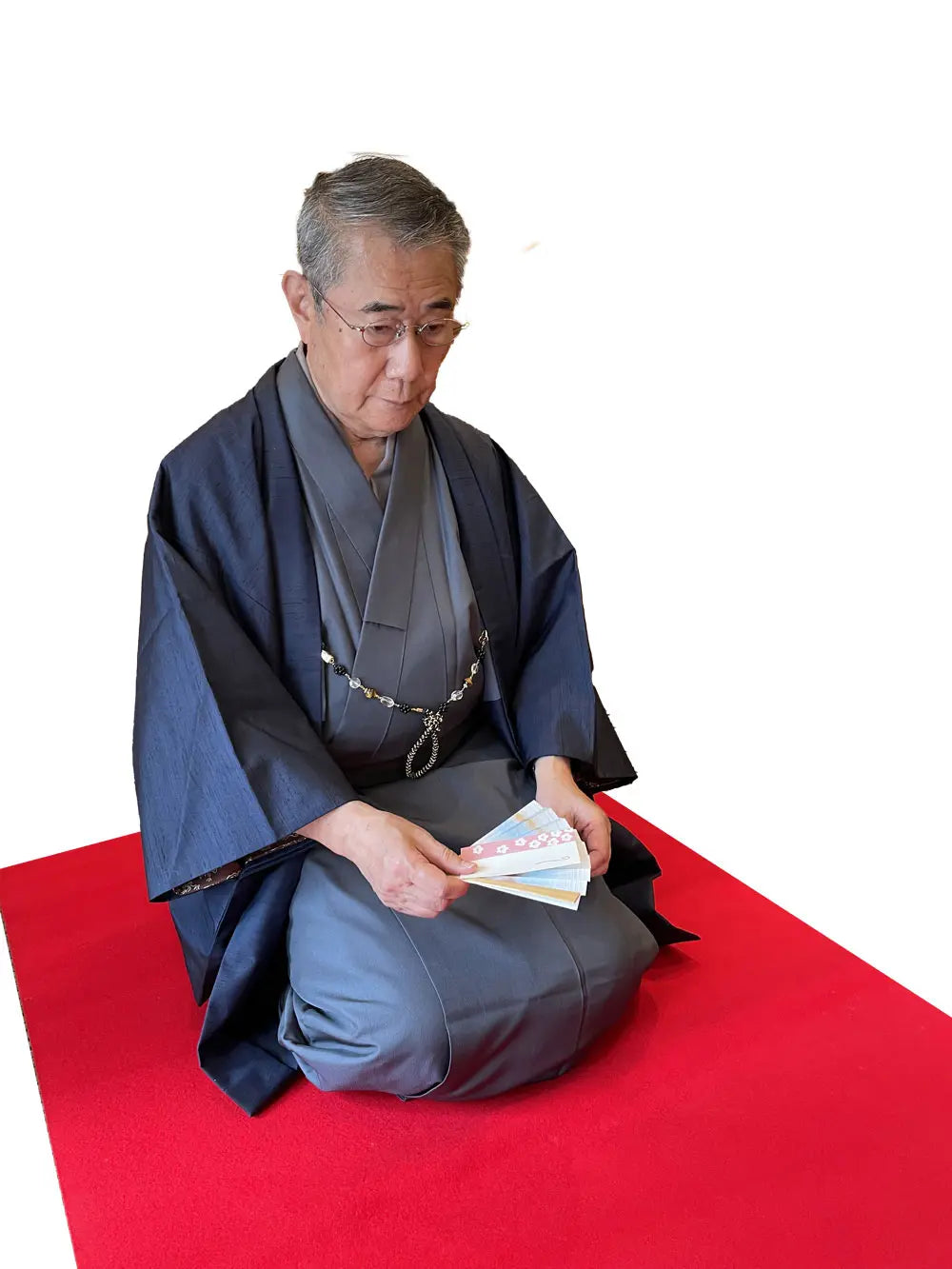
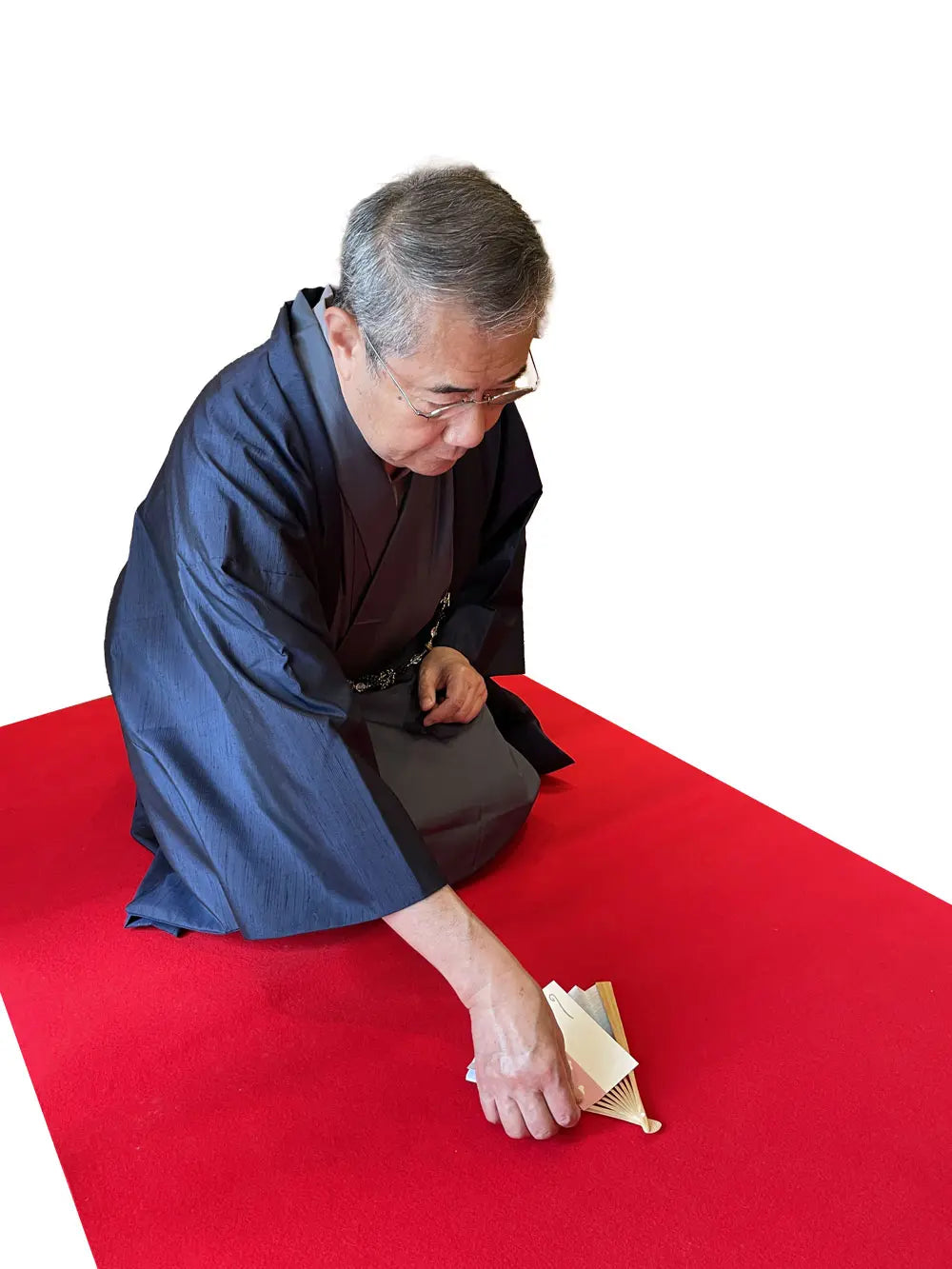
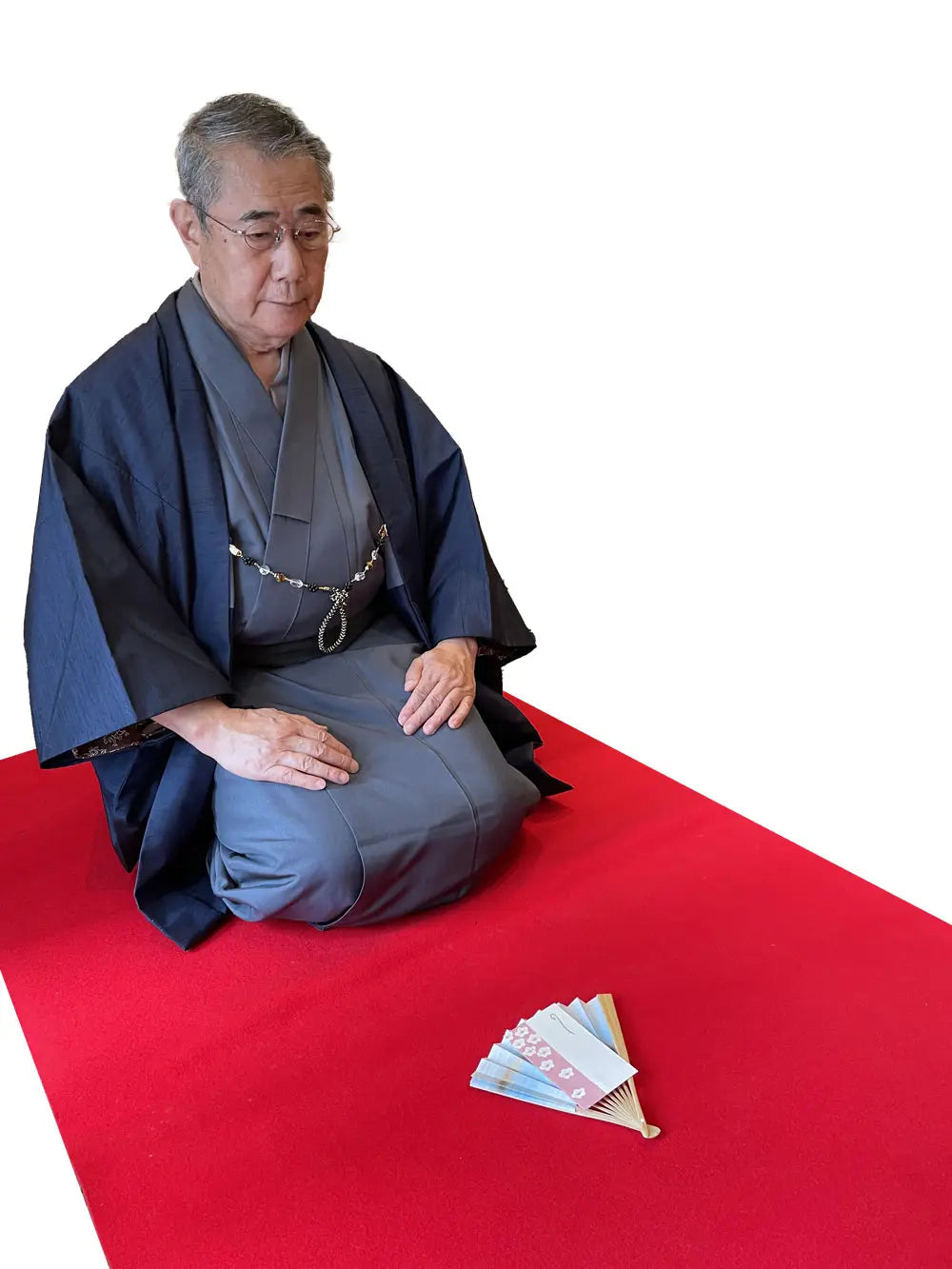
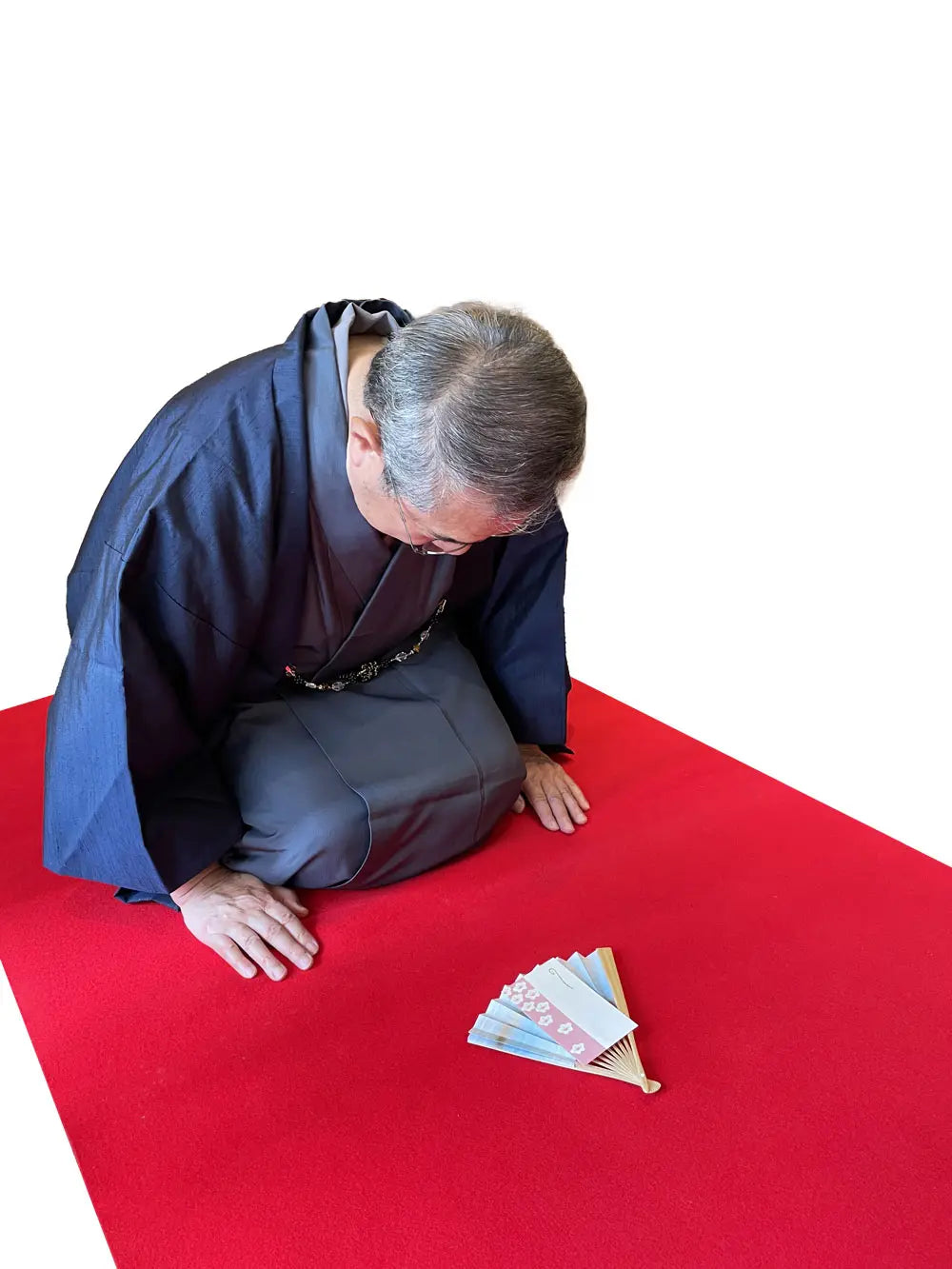
Title
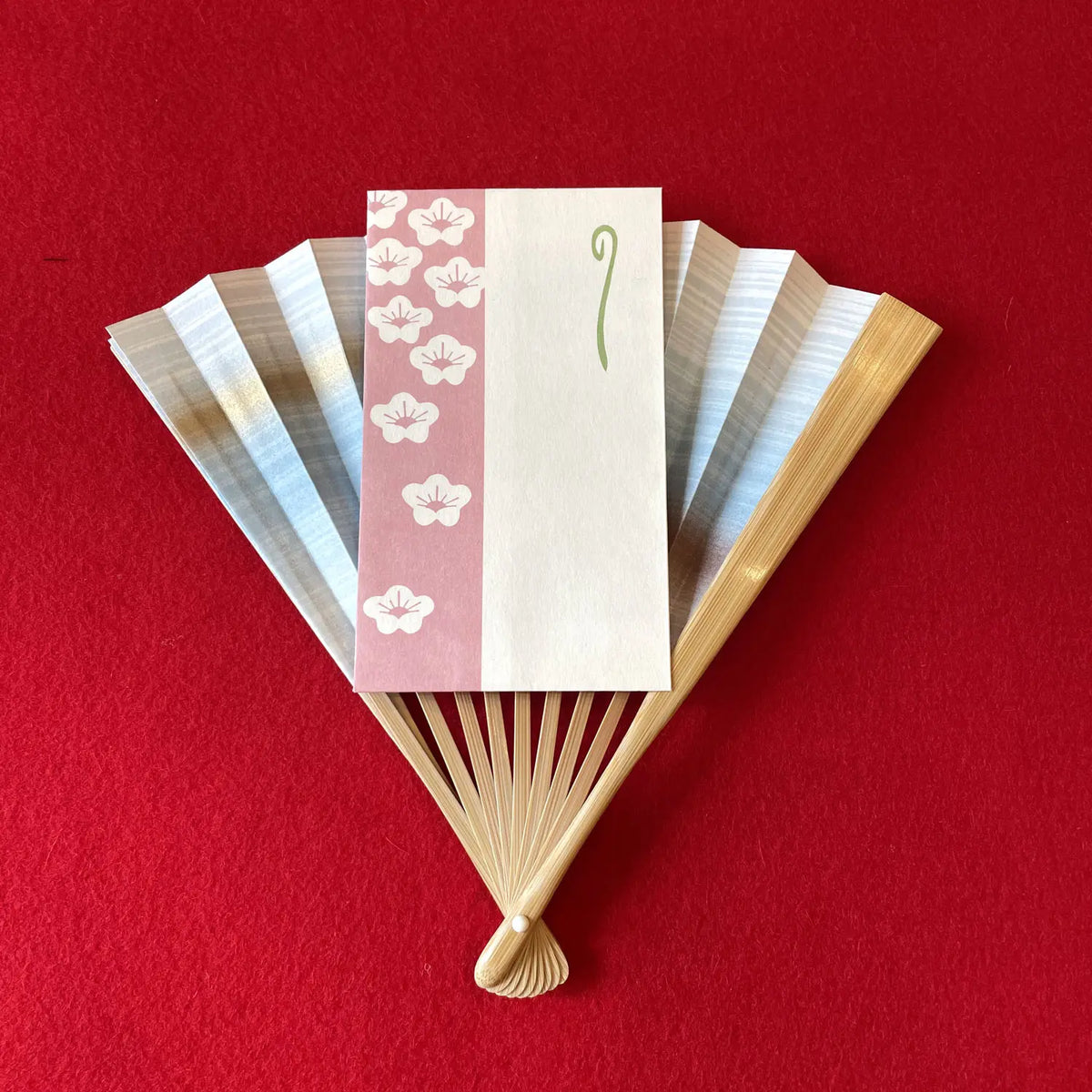
Noshibukuro and Chafan
Founded in Tensho 18folding fanThe long-establishedIbasen」
Cool and chic impressionround fan. Because of its air volume, it will be useful in many situations during the hot season. It is also perfect for carrying for scenes where you go out in yukata.
IbasenAnd?
Ibasenhas been in business for more than 430 years,round fan・folding fanand is a long-established manufacturer of Japanese paper products. Our high-gradefolding fanare made of carefully selected domestic bamboo and Japanese paper and crafted by skilled artisans. Since the middle of the Edo period, we have been transmitting the culture of the good old days in Nihonbashi. Edo, where traditional techniques shine.folding fanHand towels with traditional designs fromfolding fanThe charm of our shop is that we have a large selection of products such as the following. We hope you will enjoy our luxury hand towels as a cool fashion item or as a gift for your loved ones in various gift-giving occasions.folding fanas a cool fashion item or as a gift for your loved ones in various gift-giving occasions.
IbasenThe following is a list of ourfolding fanFeatures of
IbasenIn,folding fanWe incorporate Edo culture into the design and colors of our products. This is because we wish to carry on the good old traditional Japanese culture and Edo culture through our products. Ukiyoe was the publisher of theIbasenhas been producing products of works by popular Ukiyo-e artists such as Hiroshige Utagawa and Kuniyoshi Utagawa. Even now, in addition to traditional patterns and hanji-mono, we also produce Ukiyoe's Edofolding fanWe continue to produce that convey the humor, rebellious spirit, and chic spirit typical of the Edo people.Ibasenoffolding fanPlease take a look at our products and see for yourself.
Prepare a congratulatory fan for your festive kimono!
So far, we have explained the characteristics and usage of the shugi fan. Shugi-fan is a formal fan used for celebratory occasions.folding fanfor formal wear used at festive occasions. Women's fans are made of gold or silver base paper with black lacquered bones, while men's fans are mainly white fans with white base paper on a bamboo bone. On celebratory occasions such as weddings, the fan is inserted into the obi of the kimono and held in the hand when performing tachigirei (standing posture).
Summer for daily usefolding fanIt is important to check before attending a celebration because the way of use is different from that of the summer kimono. Kimonos for formal wear are also available for rent, but you should check with thefolding fanis also recommended to bring your own. appropriate for the celebration.folding fanIf you are looking for a kimono that is appropriate for the occasion, we recommend that you visit a long-establishedIbasento help you choose the right one for your celebration.

